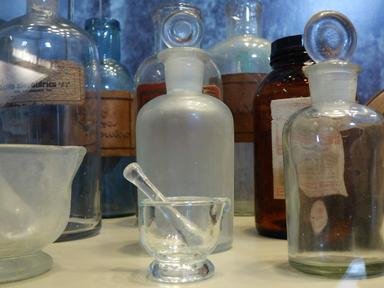Quiz Answer Key and Fun Facts
1. Oh, you're going to love this one! This element has been wowing them in our sideshow for years. It's the only non-metallic element to exist as a liquid at room temperature. What is its name?
2. This next act is a group. They've always kept to themselves somewhat, rarely interacting with the other elements in the circus. They call themselves Group 8 (or sometimes Group 18 depending on their mood).
3. Now we come to the big daddy of the circus - our strong-man. He's often found strutting around the tents impressing everyone with his size. This element has the largest atomic radius of all the naturally occurring elements and he certainly lets everyone know about it!
4. Our next performer also isn't afraid of showing off - he's a star in his flame-swallowing act because he has the highest boiling point of all the elements.
5. Another circus act not afraid of feeling the heat is our firewalker - he's entirely comfortable strolling across a bed of glowing coals because he has the highest melting point of all the elements.
6. Our next act is a graceful lady of the sky, thrilling everyone with her trapeze act. She has no fear of falling because she's the lightest element of them all!
7. From the lightest to the heaviest - our next elemental act is the heaviest element there is. He's formed a double act with the strong-man of the elemental circus and they've been impressing audiences with their combined might. What is the name of this element with the highest density?
8. Well, our next performer has no trouble attracting friends, particularly of the electronic variety. She's always happy to stop and have a chat with an electron or two, because she's the most electronegative element of the Periodic Table.
9. One of the most popular acts we have is up next. They're a group act made up of a number of metals and have been exciting audiences for years with their colourful performances and varying oxidation states (you should see the lightning change from zero to +6!). What is the name of this group?
10. Now on to our final, and shyest, act. You'll only ever see her when she's performing her balancing act as she tends to shy away from the public eye. She's the rarest element in the earth's crust.
Source: Author
NatalieW
This quiz was reviewed by FunTrivia editor
crisw before going online.
Any errors found in FunTrivia content are routinely corrected through our feedback system.

